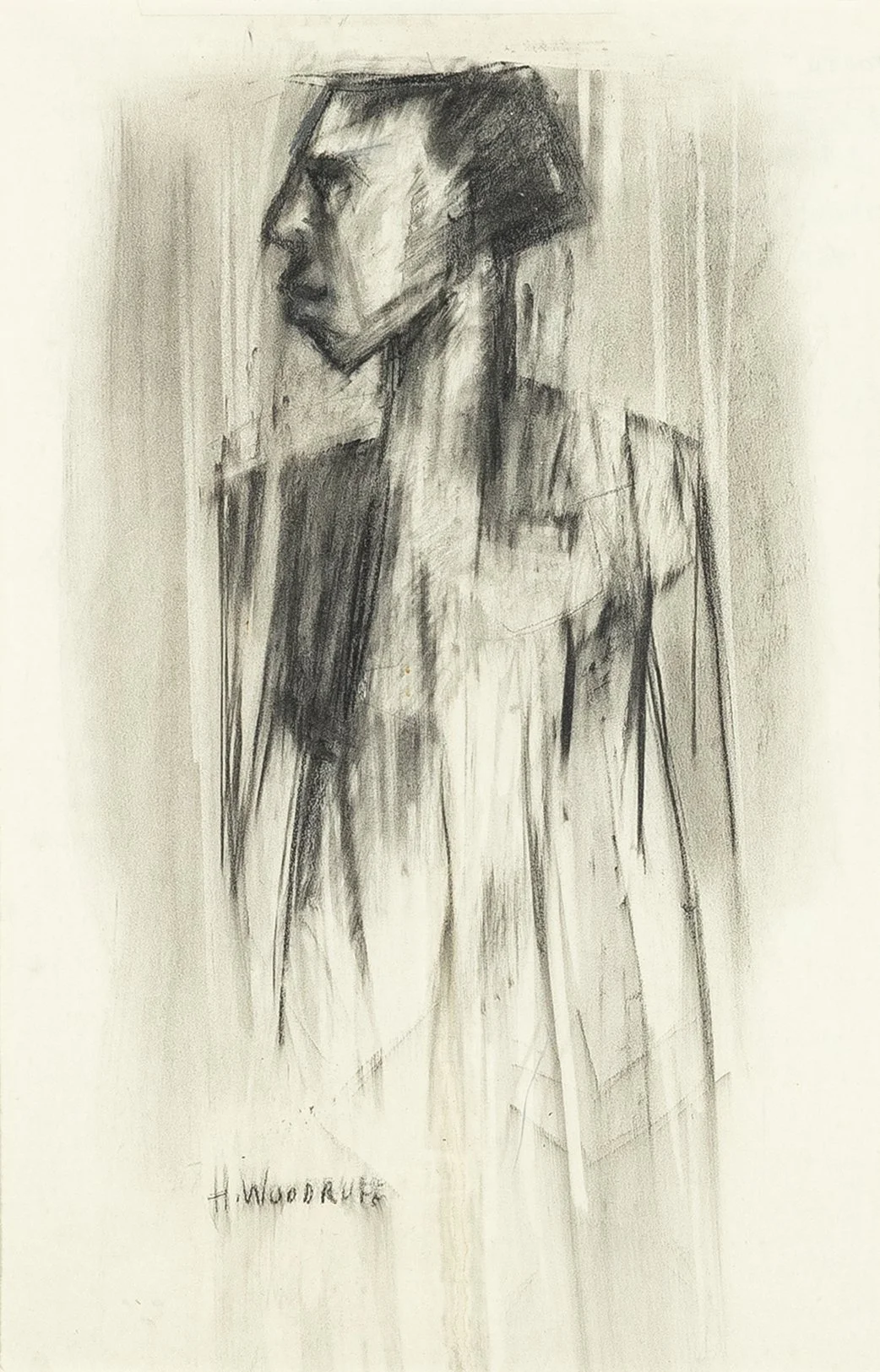
Hale
Woodruff
(1900-1980)
untitled, Torso
c. 1970
charcoal drawing on paper
21 x 12-1/2 inches (image)
signed
This drawing relates to a painting titled Torso, pictured in Hale Woodruff, 50 Years of His Art, Studio Museum in Harlem (1979); catalog accompanying the exhibition, p. 53.
A Celestial Gate
1977
color screenprint on Arches paper
18-3/4 x 21-1/2 inches (image)
21-3/4 x 26-1/4 inches (sheet)
Signed, titled, dated, and numbered 190/190
A pioneering painter, printmaker, and educator, Hale Woodruff occupies a foundational place in the history of twentieth-century American art. Born in Cairo, Illinois, and raised in Nashville, Tennessee, Woodruff studied at the John Herron Art Institute in Indianapolis and later at Harvard, Columbia, and the Académie Moderne in Paris. His early exposure to both African American folk traditions and European modernism shaped a lifelong commitment to exploring Black identity through the evolving language of modern art.
During the late 1920s and 1930s, Woodruff traveled to France, where he studied the works of Cézanne, Matisse, and the Cubists. Their influence fused with his own social and cultural experiences to create a distinctive synthesis of abstraction and representation. Upon returning to the United States, he began teaching at Atlanta University, where he founded one of the nation’s first Black art programs and mentored a generation of artists who would later define African American modernism.
His print, Celestial Gate (1977) demonstrates the mature abstraction that defined his later years, utilizing bold color planes and interlocking geometric forms which suggest spiritual portals or coded architectures. Woodruff sought to “paint the rhythms of life,” balancing modernist experimentation with a deep sense of cultural affirmation.
In the 1930s, Woodruff also created the monumental Talladega Murals (1942), which chronicle African American struggles and achievements, and stand among the greatest narrative mural cycles of the period. His career later extended to New York University, where he taught from 1946 to 1967, influencing generations of artists, including Romare Bearden and Jacob Lawrence
Selected Exhibitions
HALE WOODRUFF; Pettis Galleries, IN, 1923 (first solo exhibition)
Negro in Art Week, exhibition of primitive African sculpture, modern paintings, sculpture, drawings, applied art, and books, Art Institute of Chicago, IL, 1927
Hale Woodruff; Atlanta University, GA, 1937
Exhibition of the Art of the American Negro (1851-1940), Tanner Art Galleries, Chicago, IL, 1940
HALE WOODRUFF: An Exhibition of Selected Drawings and Paintings; Morgan State University Art Gallery, Baltimore, MD, 1968
HALE WOODRUFF: An Exhibition of Paintings and Drawings; Acts of Art, Inc., NY, 1975
Two Centuries of Black American Art, Los Angeles County Museum of Art, CA, 1976
WPA and the Black Artist: Chicago and New York, Chicago Public Library, Il, 1978
Through A Master Printer: ROBERT BLACKBURN and the Printmaking Workshop, Columbia Museum of Art, SC, 1985
The Search for Freedom: African American Abstract Painting 1945-1975, Kenkeleba House, NY, 1991
A Shared Heritage: Art by Four African Americans, Indianapolis Museum of Art, INDIANAPOLIS, IN, 1996
Hale Woodruff: Paintings, Drawings, Prints, Studio Museum in Harlem, New York, NY, 2000
Challenge of the Modern: African American Artists, 1925-1946, Studio Museum of Harlem, NY, 2003
Rising Up: Hale Woodruff’s Murals at Talladega College, High Museum of Art, Atlanta, GA, 2012–14; traveling exhibition
untitled
n.d.
color woodblock print
10 x 4 inches
signed

